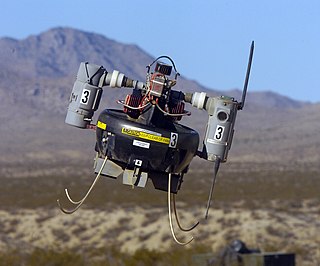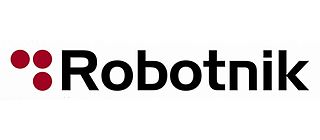Comparison of platforms
Several mobile robot platforms have previously been developed to study swarm applications.
| Robot | Sensor / Module | Motion/ Max. Speed | Size/Diameter | Autonomy Time | University/Institute | Open source software | Open source hardware | Description | Image |
|---|---|---|---|---|---|---|---|---|---|
| AMiR | distance, light, bearing | wheel, 10 cm/s | 6.5 cm | 2 h | University Putra Malaysia | AMiR [7] is a low-cost swarm robotic platform, developed as an open-source / open-hardware mobile robot. Many researches mostly on honeybee aggregation [3] (BEECLUST) was conducted with AMiR (e.g. Fuzzy decisioning [4] ). |  | ||
| Alice | distance, camera | wheel, 4 cm/s | 2.2 cm | 10 h | École Polytechnique Fédérale de Lausanne (EPFL), Switzerland | Alice is a swarm robotic platform built in a very small package size. Alice has been used in many swarm research applications such as the embodiment of cockroach aggregation. [8] |  | ||
| Cellulo | structured dense pattern sensing camera, capacitive touch | omnidirectional ball wheel, 20 cm/s | 7.5 cm | 1-2 h | École Polytechnique Fédérale de Lausanne (EPFL), Switzerland | Cellulo [9] [10] is one of the world's first tangible swarm robot platforms, combining autonomous swarms with haptic-enabled multi-user tangible interaction. Initially invented as an educational platform, research is now being conducted on rehabilitation, gaming and human-computer interaction with Cellulo in addition to education. |  | ||
| Colias | distance, light, bump, bearing, range | wheel / 35 cm/s | 4 cm | 1-3 h | CIL at University of Lincoln, UK | Colias [11] [12] is a low-cost open-source (open-hardware) platform that was developed for use in swarm robotic applications. [13] |  | ||
| Colias-III | Camera, distance, light, bump, bearing, range | wheel, 35 cm/s | 4 cm | 1-3 h | CIL at University of Lincoln, UK | Colias-III [14] is an extended version of the Colias micro-robot. It was mainly developed for implementation of bio-inspired vision systems. |  | ||
| Droplets | Light | vibration | 4.4 cm | 24h+ | Correll Lab at the University of Colorado | Droplets are an open hard- and software experimental platform for large-scale swarming research. [15] [16] [17] The team raised funds via crowdfunding to build 1000 of these 'Droplets'. [18] Infinite experiments due to a powered floor that doubles as global communication medium for swarm programming. [19] | |||
| E-puck | distance, camera, bearing, accele, mic | wheel / 13 cm/s | 7.5 cm | 1-10 h | École Polytechnique Fédérale de Lausanne (EPFL), Switzerland | E-puck [21] is one of the most successful robots and was primarily designed for educational purposes. However, due to its simplicity, it is frequently employed in swarm robotics research as well. It has user replaceable batteries and an autonomy time of 2-4 h. |  | ||
| Jasmine | distance, light, bearing | wheel , N/A | 3 cm | 1-2 h | University of Stuttgart, Germany | Jasmine [23] is a swarm robotic platform which was used in many swarm robotic researches. [3] |  | ||
| Kilobot | distance, light | vibration, 1 cm/s | 3.3 cm | 3 - 24 h | Harvard University, USA | Kilobot [26] is a relatively recent swarm robotic platform with novel functions such as group charging and group programming. Due to its simplicity and low power consumption, it has a long autonomy time of up to 24 h. Robots are charged manually in groups in a special charging station. | |||
| Kobot | distance, bearing, vision, compass | wheel , N/A | 12 cm | 10 h | KOVAN Research Lab, Middle East Technical University, Turkey | Kobot [27] is a mobile robot specifically designed for swarm robotic research. It has several sensors that makes it an ideal platform for implementing various swarm robotic scenarios such as coordinated motion. It has approximately 10 h of autonomy time. It has a user replaceable battery which is recharged manually. It has been used in implementation of a self-organised flocking scenario. [28] | |||
| Mona | distance, bump, range, RF | wheel, 5 cm/s | 6.5 cm | Perpetual | The University of Manchester, UK | Mona [31] is an open-source robot mainly designed to test the proposed Perpetual Robotic Swarm. [32] It has been designed as a modular platform allowing deployment of additional modules that are attached on top of the platform, such as wireless communication or a vision board. Latest version of the robot was developed as a robotic platform for education and research purposes. |  | ||
| R-One | light, IR, gyro, bump, accelerometer | wheel, 30 cm/s | 10 cm | 6 h | Rice University, USA | R-one [34] is a low-cost Robot for research and teaching purposes. It was used in several study on swarm robotics. | |||
| S-bot | light, IR, position, force, speed, temp, humidity, acc., mic | treels | 12 cm | 2 h | École Polytechnique Fédérale de Lausanne (EPFL), Switzerland | S-bot [35] is one of the most influential and capable swarm robotic platforms ever built. s-bots have a unique gripper design capable of gripping objects and other s-bots. They have an autonomy time of approximately 1 h. | |||
| Spiderino | range, light, bearing (with extension) | six legs, 6 cm/s | 8 cm | 4-20 h | University of Klagenfurt, Austria | Spiderino [37] is a low-cost research robot based on the locomotion unit of a Hexbug spider toy. The modification replaces the robot head with a 3D-printed adapter, consisting of two parts to provide space for sensors, a larger battery, and a printed circuit board (PCB) with an Arduino microcontroller, Wi-Fi module, and motor controller. | |||
| SwarmBot | range, bearing, camera, bump | wheel, 50 cm/s | 12.7 cm | 3 h | Rice University, USA | SwarmBot [38] is another successful platform developed for swarm robotics research. It has approximately 3 h of autonomy time and robots are able to find and dock to charging stations which are placed on walls. | |||
| Acoustic Swarm [39] | microphone, speaker, IMU | wheel, 44 cm/s | 3 cm | 1-3 h | University of Washington, USA | Acoustic swarm [41] is a platform where tiny robots cooperate with each other using acoustic signals to navigate with centimeter-level accuracy. The swarm devices spread out across a surface as well as navigate back to the charging station where they can be recharged. |














